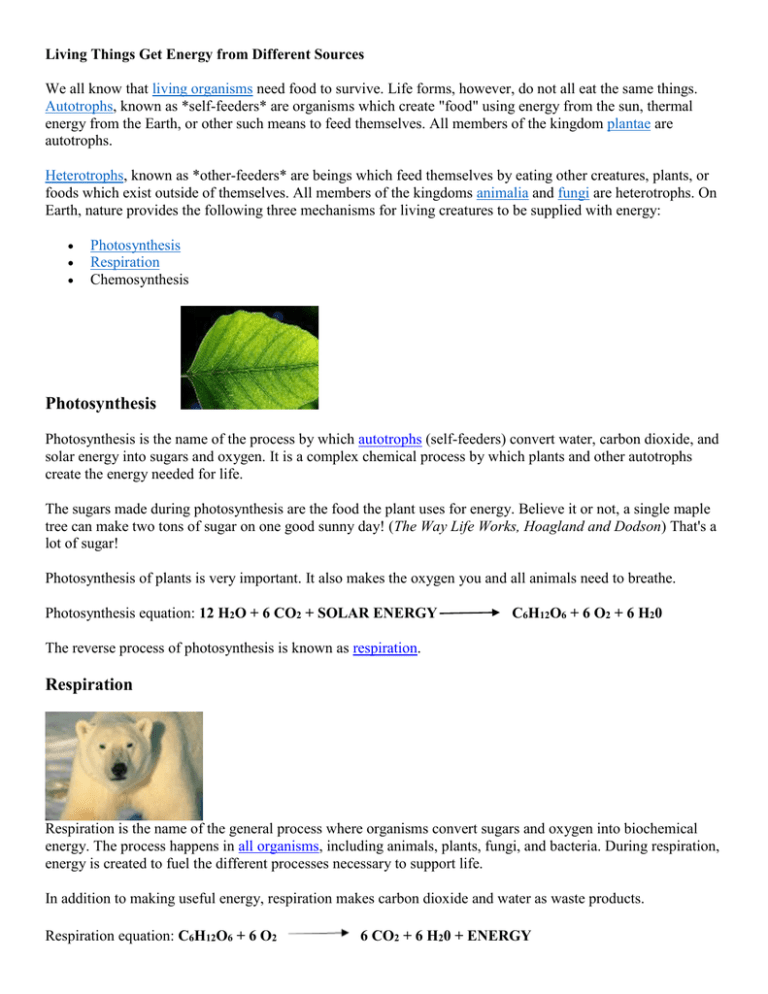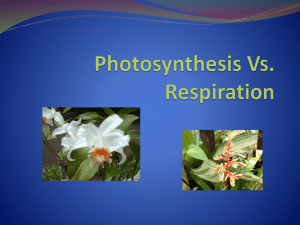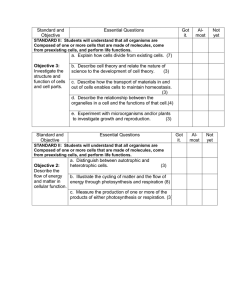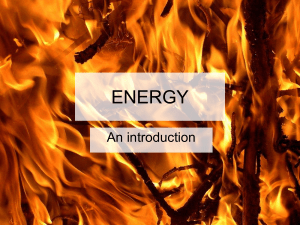Photosynthesis
advertisement

Living Things Get Energy from Different Sources We all know that living organisms need food to survive. Life forms, however, do not all eat the same things. Autotrophs, known as *self-feeders* are organisms which create "food" using energy from the sun, thermal energy from the Earth, or other such means to feed themselves. All members of the kingdom plantae are autotrophs. Heterotrophs, known as *other-feeders* are beings which feed themselves by eating other creatures, plants, or foods which exist outside of themselves. All members of the kingdoms animalia and fungi are heterotrophs. On Earth, nature provides the following three mechanisms for living creatures to be supplied with energy: Photosynthesis Respiration Chemosynthesis Photosynthesis Photosynthesis is the name of the process by which autotrophs (self-feeders) convert water, carbon dioxide, and solar energy into sugars and oxygen. It is a complex chemical process by which plants and other autotrophs create the energy needed for life. The sugars made during photosynthesis are the food the plant uses for energy. Believe it or not, a single maple tree can make two tons of sugar on one good sunny day! (The Way Life Works, Hoagland and Dodson) That's a lot of sugar! Photosynthesis of plants is very important. It also makes the oxygen you and all animals need to breathe. Photosynthesis equation: 12 H2O + 6 CO2 + SOLAR ENERGY C6H12O6 + 6 O2 + 6 H20 The reverse process of photosynthesis is known as respiration. Respiration Respiration is the name of the general process where organisms convert sugars and oxygen into biochemical energy. The process happens in all organisms, including animals, plants, fungi, and bacteria. During respiration, energy is created to fuel the different processes necessary to support life. In addition to making useful energy, respiration makes carbon dioxide and water as waste products. Respiration equation: C6H12O6 + 6 O2 6 CO2 + 6 H20 + ENERGY








